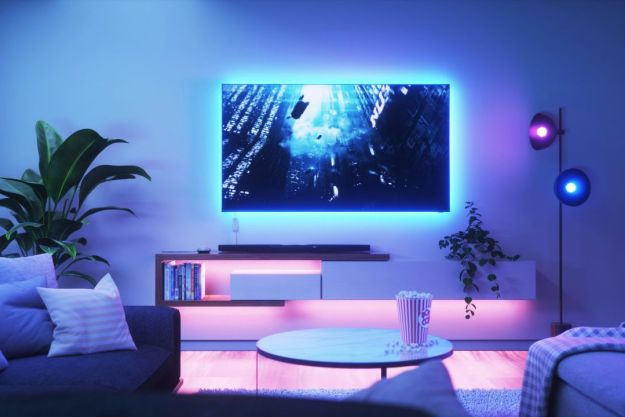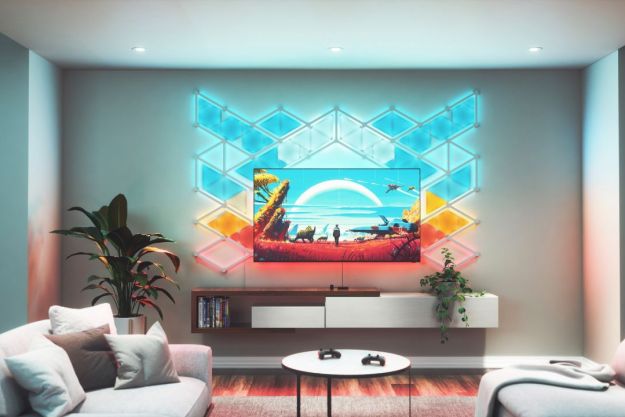Ah, the light bulb. Thomas Edison’s invention changed everything, and our modern world wouldn’t be where it’s at now without it. Through the years, the technology evolved to deliver more energy efficient bulbs like CFLs (Compact Fluorescent Lamps) and LEDs (Light Emitting Diodes). Despite the iterative advancements, more efficient bulbs are just like their predecessors — they turn on when you flick the switch one way and off when you flick it the other.
That all changed with the introduction of the smart light bulb. Philips Hue, along with many other companies in the last several years, has shown us what’s possible: From scheduling routines to emitting all the colors of the rainbow, today’s smart light bulbs continue to shape the smart home in a fundamental way. While they’re great, they could be smarter, as most still require some level of management on our part. Fortunately for all of us, the future is bright.
Inactive sensors already in place
To investigate the possibilities of the smarter light bulb, I spoke with David Kavanagh, senior director of consumer products at LIFX, an Australian company known for its line of smart bulbs. What’s interesting about the company is its forward-thinking approach to embedding sensors into its bulbs that do more than just produce or turn on light.
“We’ve always been trying to build the premium light bulb in the market,” Kavanagh told me. “And we have added pieces of tech, such as ambient light sensors, accelerometers, infrared, and additional pieces of technology in our products.” The company introduced its infrared-emitting LIFX+ bulbs, which help cameras equipped with night vision see better in the dark, in 2017.

Lifx bulbs often contain sensors that aren’t active for practical, real-world applications when they ship, for development reasons. There’s a finite amount of resources, so it’s a battle of choosing what features to focus on and invest in.
The possibilities
Kavanagh shared several ways sensors can evolve the light bulb into an intelligent device that can make decisions based on our habits and what the sensors are detecting. For example, he mentioned how the infrared sensor in LIFX+ bulbs can be used to operate an air conditioner by beaming commands via infrared. During CES 2020, I saw a demo that involved the accelerometer, which sensed the subtle vibration of someone tapping a lamp to turn the bulb on or off.
There are interesting things that can happen when you can have sensors in bulbs that traditionally rely on Wi-Fi, cloud, or Bluetooth.
Another example revolves around the ambient light sensor, which can automatically detect sunrise and sunset. Rather than having the user program routines, the bulb can adjust themselves to the appropriate level. These sensors also give smart light bulbs independence from having to constantly be connected to a network to send/receive commands.
“There are interesting things that can happen when you can have sensors in bulbs that traditionally rely on Wi-Fi, cloud, or Bluetooth. If you’ve got things in the bulb that can be running locally, you’ve got the ability to handle some use cases that don’t require those things,” Kavanagh explained.
Tackling the space dilemma
The biggest challenge in all of this is dealing with the limited real estate crammed inside of a bulb. “Some of the issues we have with our products being a light bulb is that they’re so small. Getting the tech into those products means compromising, trying to deal with space and heat,” Kavanagh said.
The company’s solution to this is the LIFX Switch, which replaces the traditional light switch in your home. Essentially, it upgrades your “dumb” lights into smart ones. Kavanagh explained his vision of how switches can be developed to act as a hub for smart light bulbs.
“We’re looking at a switch to be the opportunity for a product like LIFX to have more tech and more features in the home that potentially don’t even need to go to the cloud. You could have things being downloaded and running more locally in your environment on a switch.”
We could eventually enter an era where apps become redundant. Instead, artificial intelligence, combined with these sensors, will be enough to allow bulbs to learn our routines — such as when we’re getting up in the morning or waking up in the middle of the night to go to the bathroom.
Some would argue the pace of innovation regarding smart light bulbs is lagging compared to other devices … but there’s little doubt that the future looks bright.
Want more news, reviews, guides, and features from Digital Trends? Follow us on Apple News, Google News, and Flipboard.
Editors' Recommendations
- Daisy is an installation and repair company designed for your smart home
- I checked out Govee’s new AI smart lights and now I want them everywhere
- Why moving your smart home could be a nightmare
- GE Lighting launches Smart Hexagon Panels with support for Alexa and Google Home
- Govee jumps on the Matter bandwagon with new LED Strip Light




